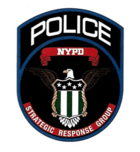
The New York City Transit Police Department was a law enforcement agency in New York City that existed from 1953 to 1995, and is currently part of the NYPD. The roots of this organization go back to 1936 when Mayor Fiorello H. La Guardia authorized the hiring of special patrolmen for the New York City Subway. These patrolmen eventually became officers of the Transit Police. In 1949, the department was officially divorced from the New York City Police Department, but was eventually fully re-integrated in 1995 as the Transit Bureau of the New York City Police Department by New York City Mayor Rudy Giuliani.
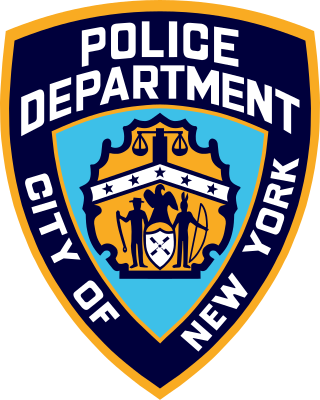
The New York City Police Department (NYPD), officially the City of New York Police Department, is the primary law enforcement agency within New York City. Established on May 23, 1845, the NYPD is the largest, and one of the oldest, municipal police departments in the United States.

The Center for Constitutional Rights (CCR) is a progressive non-profit legal advocacy organization based in New York City, New York, in the United States. It was founded in 1966 by Arthur Kinoy, William Kunstler and others particularly to support activists in the implementation of civil rights legislation and to achieve social justice.

The New York Civil Liberties Union (NYCLU) is a civil rights organization in the United States. Founded in November 1951 as the New York affiliate of the American Civil Liberties Union, it is a not-for-profit, nonpartisan organization with nearly 50,000 members across New York State.

The Lower Manhattan Security Initiative (LMSI) is a New York City Police Department initiative overseen by the Counterterrorism Bureau to increase surveillance efforts in Lower Manhattan, New York City, New York, United States. It is housed in the Lower Manhattan Security Coordination Center (LMSCC) located at 55 Broadway. The LMSI covers a 1.7-mile area from Canal Street to Battery Park, including the New York Stock Exchange, World Financial Center, former World Trade Center site, and numerous financial institutions.

The New York City Police Department (NYPD) is structured into numerous bureaus and units. As a whole, the NYPD is headed by the Police Commissioner, a civilian administrator appointed by the Mayor, with the senior sworn uniformed officer of the service titled "Chief of Department". The Police Commissioner appoints the First Deputy Commissioner as the department's second-in-command and the Chief of Department as the department's highest ranking uniformed officer. The commissioner also appoints a number of deputy and assistant commissioners who do not have operational command and are solely for support and administrative function. The department is divided into twenty bureaus, six of which are enforcement bureaus. Each enforcement bureau is further subdivided into sections, divisions, and units, and into patrol boroughs, precincts, and detective squads. Each bureau is commanded by a bureau chief. There are also a number of specialized units that are not part of any of the bureaus and report to the Chief of the Department.
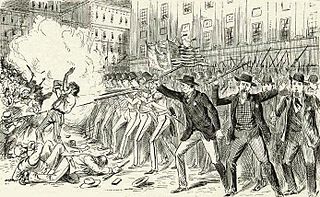
The New York City Police Department (NYPD) originates in the Government of New York City attempts to control rising crime in early- to mid-19th-century New York City. The City's reforms created a full-time professional police force modeled upon London's Metropolitan Police, itself only formed in 1829. Established in 1845, the Municipal Police replaced the inadequate night watch system which had been in place since the 17th century, when the city was founded by the Dutch as New Amsterdam.

Throughout the history of the New York City Police Department, numerous instances of corruption, misconduct, and other allegations of such, have occurred. Over 12,000 cases have resulted in lawsuit settlements totaling over $400 million during a five-year period ending in 2014. In 2019, misconduct lawsuits cost the taxpayer $68,688,423, a 76 percent increase over the previous year, including about $10 million paid out to two exonerated individuals who had been falsely convicted and imprisoned.
Rankin & Taylor was a law practice that represented bicyclists in both civil and criminal cases. The firm's founding partners were cyclists.
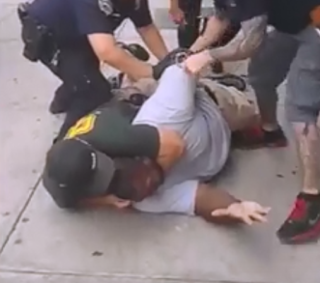
On July 17, 2014, Eric Garner, a 43-year-old African American man, was killed in the New York City borough of Staten Island by Daniel Pantaleo, a New York City Police Department (NYPD) officer, after the latter put him in a prohibited chokehold while arresting him. Video footage of the incident generated widespread national attention and raised questions about the use of force by law enforcement.

Black Lives Matter (BLM) is a decentralized political and social movement that seeks to highlight racism, discrimination, and racial inequality experienced by black people, and promote anti-racism. Its primary concerns are incidents of police brutality and racially motivated violence against black people. It started following the killings of Trayvon Martin, Michael Brown, Eric Garner, and Rekia Boyd, among others. The movement and its related organizations typically advocate for various policy changes considered to be related to black liberation. While there are specific organizations that label themselves simply as "Black Lives Matter", such as the Black Lives Matter Global Network, the overall movement is a decentralized network of people and organizations with no formal hierarchy. The slogan "Black Lives Matter" itself remains untrademarked by any group. Despite being characterized by some as a violent movement, the overwhelming majority of its public demonstrations have been peaceful.
The New York City Police Department is reported to have a number of military-grade X-ray vans that contain X-ray equipment for inspecting vehicles.
100 Blacks In Law Enforcement That Care is an American New York City-based advocacy group which focuses on fighting injustices between the African American community and their interactions with the New York City Police Department (NYPD). This internal relations advocacy group speaks out against police brutality, racial profiling and police misconduct. They are composed of active duty and retired employees from within the department. They also support the black community with financial, educational and legal support.

The New York City Police Department (NYPD) actively monitors public activity in New York City, New York, United States. Historically, surveillance has been used by the NYPD for a range of purposes, including against crime, counter-terrorism, and also for nefarious or controversial subjects such as monitoring political demonstrations, activities, and protests, and even entire ethnic and religious groups.
In November 2019, a consortium of around 15 local grassroots organizations called the FTP coalition began a series of disruptive protests in New York City against a crackdown on fare evasion and an increased police presence in the city's transit system. According to the coalition organizers, "FTP stands for many things, including 'Feed the People' and 'For the People', but stands for 'Fuck the Police' when it comes to subway protests."
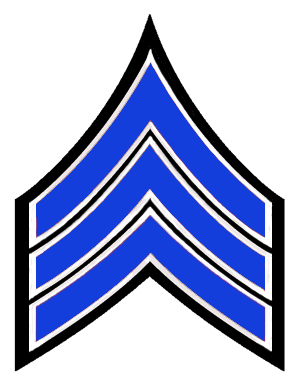
The Sergeants Benevolent Association(SBA) is an American police union that represents the sergeants of the New York City Police Department (NYPD), while the department's nonsupervisory patrol officers are represented by the larger Police Benevolent Association. The SBA is characterized by the Associated Press as a partisan organization, and is known for perpetually criticizing the mayor of New York City (especially recent mayor Bill de Blasio), unfavored police commissioners, and other politicians through an inflammatory Twitter account, press releases and other media statements.
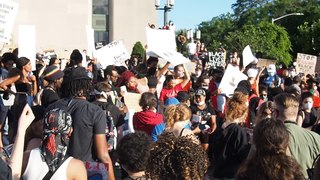
George Floyd protests in New York City took place at several sites in each of the five New York City boroughs, starting on May 28, 2020, in reaction to the murder of George Floyd. Most of the protests were peaceful, while some sites experienced protester and/or police violence, including several high-profile incidents of excessive force. Looting became a parallel issue, especially in Manhattan. As a result, and amid the COVID-19 pandemic, the city was placed under curfew from June 1–7, the first curfew in the city since 1943. The protests catalyzed efforts at police reform, leading to the criminalization of chokeholds during arrests, the repeal of 50-a, and other legislation. Several murals and memorials were created around the city in George Floyd's honor, and demonstrations against racial violence and police brutality continued as part of the larger Black Lives Matter movement in New York City.

Gwen Carr is an American activist, public speaker, and author. Carr's son, Eric Garner, was killed by a New York Police Department officer who used a prohibited chokehold to arrest Garner. Since her son's death, Carr has become active in police reform in the United States, including as a member of Mothers of the Movement and a voice in the Black Lives Matter movement.
Walter "Hawk" Newsome is an American law school graduate who co-founded Black Lives Matter of Greater New York alongside his sister Chivona Newsome.

New York City has been the site of many Black Lives Matter protests in response to incidents of police brutality and racially motivated violence against black people. The Black Lives Matter movement began as a hashtag after the shooting death of African-American teen Trayvon Martin, and became nationally recognized for street demonstrations following the 2014 deaths of two African Americans, Michael Brown and Eric Garner. Garner was killed in the Staten Island borough of New York City, leading to protests, demonstrations, and work towards changes in policing and the law. Following the murder of George Floyd in Minnesota in 2020, the global response included extensive protests in New York City, and several subsequent changes to policy.
